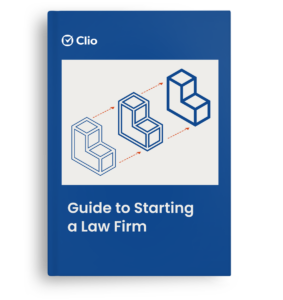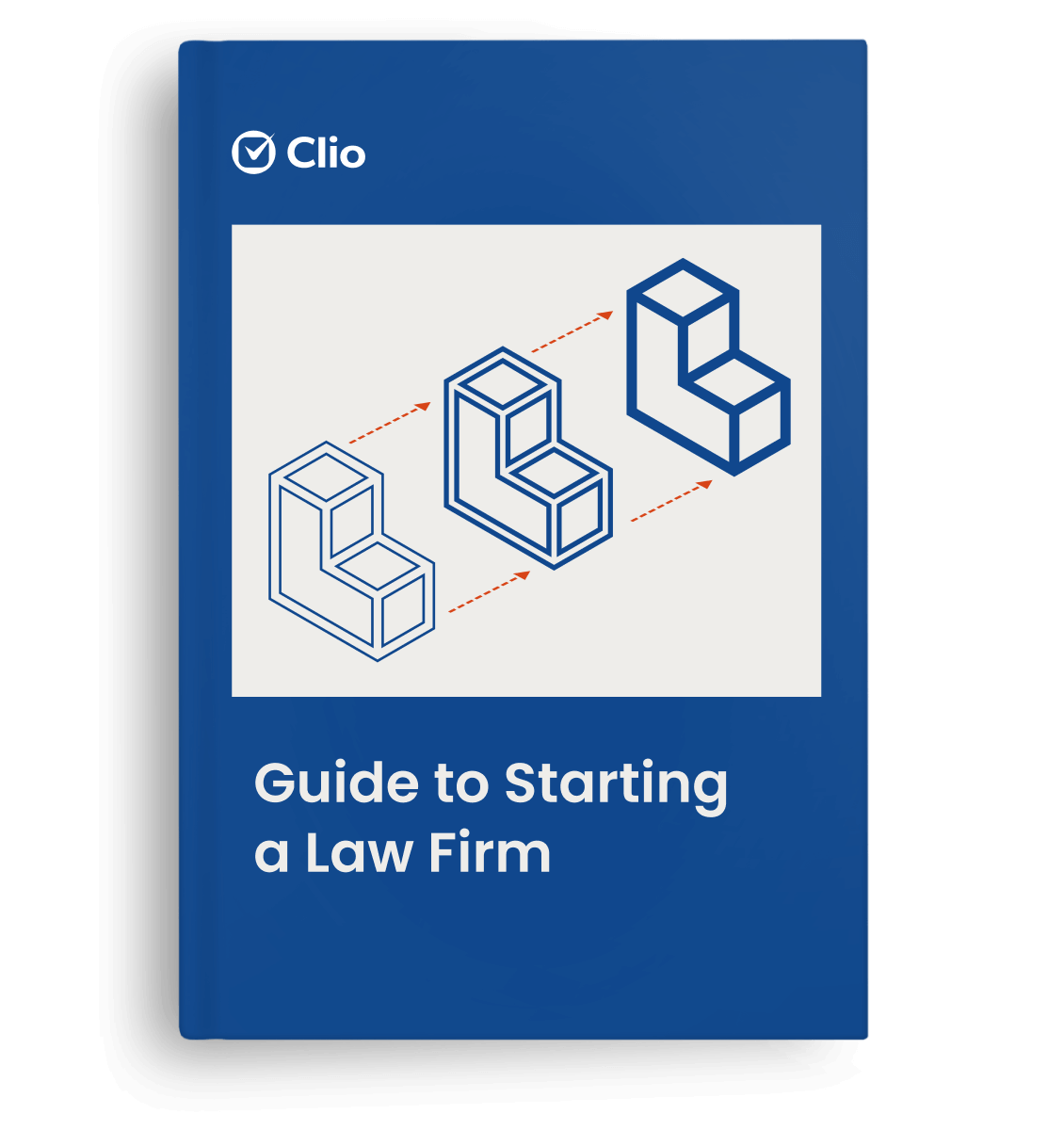Patrick Palace and Jordan Couch of Palace Law in Tacoma, Washington, are both staunch advocates for the use of technology in law firms. They believe that tech solutions, when implemented correctly, can help firms complete administrative tasks more efficiently so that they can spend more time practicing law.
Certainly, this belief has held true for Palace Law. Simply by using technology to improve their client intake process, the firm met its goal for the number of new clients it wanted to take on before it reached the third quarter of 2017, and has already increased its yearly revenues by 76% by the end of the third quarter.
What’s their secret? In short, they made thoughtful, deliberate improvements in implementing new technology tools and iterating on their existing processes. Patrick and Jordan took some time to share specific advice based on what they’ve learned from Palace Law’s success.
Here’s what they had to say:
Cover the basics first
While Jordan cautioned against succumbing to shiny object syndrome when it comes to adopting new technologies, he does believe that there is a baseline of technology that one needs to effectively run a modern legal practice. More specifically, he thinks these four components need to be covered:
- Communication. “You need a way to communicate with clients and colleagues in a way that works best for them,” Jordan said. “You can use email, Slack, whatever you need—just something to communicate with people.” Additionally, legal phone systems offer advanced features such as remote call recording, transcription, and visual voicemail.
- Documents. “You need to have something for documents, whether it’s Google or Office 365, or something else.”
- Workflow management. “You need something to manage your workflow. I live by my Trello board. Whatever it tells me to do I do.”
- Practice management. “Finally, you need practice management software, and if your practice management software won’t link directly to the other things on this list, then you’re starting off on the wrong foot and nothing’s going to work.
Ask everyone for input
Start by getting everyone in the office comfortable with these basic tools, and you may be surprised at how even the most tech-averse people in your office eventually climb on board. Jordan explains:
In our office, we have people that are not big tech people. But we had a meeting the other day, now that everyone’s gotten a little used to these tools, where we all shared our tips. And people that used to absolutely hate every new tech tool we brought in have found new, creative ways to use these baseline tech tools. They were sharing things that I didn’t know I could do.
For example, one person suggested using Slack to automatically create Trello cards. With lots of people contributing ideas, you’ll find ways to improve your law firm that you may never have thought of otherwise.
You may like these posts
Have a clear vision
Once you’ve got the basics covered, it’s time to start looking at more specific problems. For Jordan, it’s incredibly important to have a clear idea of the processes you want to improve before you start using technology. Embracing technology for the sake of embracing technology, without evaluating what your law firm needs, will only lead to more problems. As he explains:
Tech is not the first step, tech is the second step. The first step is establishing a clear vision of the process that you want to accomplish, and then tech comes in as the tool, or set of tools, that can be used to accomplish that more efficiently. I think lawyers often jump onto tech hoping for an answer, and that just leads to more, bigger problems. You have to have the process clearly delineated, and then it’s best to add in tech solutions for efficiency and effectiveness.
Start with what you don’t like
How do you know what process you should try to automate first? Patrick believes it’s best to start with what you don’t like.
I always tell people to start with the things they hate doing—the things that take a lot of time, the things that are repetitive. Those are the things you want to automate, because then you’re just making yourself happier, right?
For example, Palace Law’s old client intake process used to involve a number of different paper forms. Someone at the front desk would get a call, fill out a form, pass that to whoever might work with the potential client, and then that person would fill out another form. These forms would inevitably get set aside, misplaced, or lost, leading to wasted time tracking down key client information.
“All of that is gone now,” said Patrick. Here’s their new process:
When someone calls, Emily, who’s in charge of our intake process, gets the basic information for them and puts it into a Google spreadsheet. Then she asks around to see who’s available to take the call. Even if I’m out of the office, I can still take a call because everything I need is all in the Google spreadsheet. I already have their name, their address and a little bit about them so I can start talking to them right away.
I record all the information I need for their case, and then when I’m done I write ‘submit’ and a new contact is created in Clio, and a new matter is created in Clio—and they’re both linked together. All of the important data is stored in Airtable, and a Trello card is created with that client’s information. From then on, we know exactly where they are in every step of the intake process. We’re keeping track of them, and no one gets forgotten.
Constantly review and improve your processes
Palace Law didn’t create their current client intake process all at once. Rather, they started with something simple, and improved on it from there.
“It has continued to be built out,” Patrick said. “It started a little simpler, but we’ve come up with new versions and added more steps. We’re on version three right now, and we’ve kept adding steps whenever someone said, ‘It would be nice if it could do this for me automatically,’ and we’d say, ‘Okay, well let’s do this.’”
Indeed, Palace Law’s process does far more than simply create new clients and contacts in Clio automatically: Using document automation, all relevant information collected as part of the client intake process is also used to automatically create their initial contracts. “It’s ready-made for them in seconds,” Patrick said.
Everything is signed digitally as well, so clients don’t need to come back to the office to sign multiple documents as their case progresses. “When clients do come in the office they just sign a pad, and the digital signature is then placed into all their documents, and then the documents are sent out immediately to the client through [the client portal],” Patrick explained.
All of that adds up to a lighter workload for the staff at Palace Law, and a better experience for clients.
By the time the client gets home from their initial meeting with us their client portal is set up, and the first set of the documents—their contract and our ‘Welcome to Palace Law’ letter—is already waiting for them. They’ll also go through a little training to learn how to use [the client portal], how to access their documents, and all the client services and benefits that we offer them so they can get any legal information they’re curious about, seamlessly, instantly, 24/7 from us.
Palace Law follows a similarly iterative process with everything new that it implements. They may not get it right the first time, and new technology may come available, so it’s important to continue looking for ways that processes can be improved.
Pay someone else to help you implement tech
At the 2017 Clio Cloud Conference, Patrick was shocked to see that, once again, lawyers were found to be spending an average of six hours per day on non-legal work, according to the Legal Trends Report.
“Why are the lawyers in these firms spending so much time doing non-law?” he said. “There are people that are so much better skilled, talented, capable, and efficient at doing these tasks.”
Palace Law has certainly taken a different approach. They have an entire team dedicated solely to improving processes at the firm and implementing new tech solutions—and their last four hires have been technology people, not lawyers.
“We have a project manager in our office who doesn’t touch any cases, whose job is not to work on law,” Patrick said. “As a project manager, her only job is to develop and implement each of the projects that is dreamed up and then approved by the management team.”
“In addition to a project manager, we’ve brought in somebody who codes and writes and does user experience design,” he added. “Our advice would be to set up systems, hire people with technology skills who can help improve your firm’s efficiency through automation, and let lawyers practice law.”
Follow a defined process for implementing new technology
In addition to hiring a team to implement new tech solutions, Palace Law also follows a specific process to evaluate ideas and put together new processes efficiently.
Often, it starts with a simple question. “After we decide on something we’d like to automate, we ask, ‘Can we turn this into an if-then statement?” Patrick said. “What do we want to be the initiating point, and what do we want to be the end point, and can we add onto that?”
Taking a bigger step back, Palace Law has teams that are responsible for coming up with ideas, prioritizing them, and implementing them.
“We have a management team that has 90-day goals and priorities,” Patrick said. “A lot of the goals are tech based, i.e., we want to develop a system that does X, Y, or Z. But we get those ideas often from another team that’s been set up as a think tank to brainstorm ideas. That team feeds ideas up to the management team, who votes on priorities, value, budgets, time, and who’s going to handle these projects.”
From there, ideas get passed to Palace Law’s project manager for execution or improvement. The firm is constantly improving the tech it uses, without taking away from its lawyers’ time to practice law.
Don’t be afraid to start
Staying on the cutting edge of legal technology might seem easy with a team to help you out, but what if you don’t have a team? What if you’re a solo, or if you have a team, but no tech-focused staff?
Palace Law didn’t always have a project manager and a team focused on implementing new technology. Patrick started out embracing tech all on his own, and while it was difficult at first, hiring help allowed him to start reaping the benefits of using technology in his practice sooner than you might think.
“I guess there was a short awkward moment where I was trying to do everything,” he said. “But then we started hiring, and it really got me inspired, because every time we hired someone to do this [tech] stuff, we had a new expert who took it off my plate and got it done faster. I didn’t have to do it anymore but I could direct it. I could brainstorm, and I could envision what I wanted.”
Embrace tech to practice law better
Technology has changed the way Patrick and Jordan practice law. They’re more efficient, more productive, and they’re able to serve their clients better while being less stressed. For lawyers hesitant to embrace tech, Jordan had this to say:
I can do it with a piece of paper and a pen, and I’ve gone to court like that before. But I’m a lot more effective when I go to court with online documents. If a judge asks me a question, I can have the answer immediately, instead of having to go back to my desk and say, ‘Give me a moment, your honor,’ I have the answers immediately. I’m more prepared. I’m better off, and I’m getting there faster.
Patrick agreed. “I have practiced law long enough to know what it was like when there was no such thing as legal tech, and to see the change from then to now, I think it’s nothing short of exhilarating,” he said. “At Palace Law, we are accelerating into tech as fast as we possibly can.”
We published this blog post in October 2017. Last updated: .
Categorized in: Business, Technology









